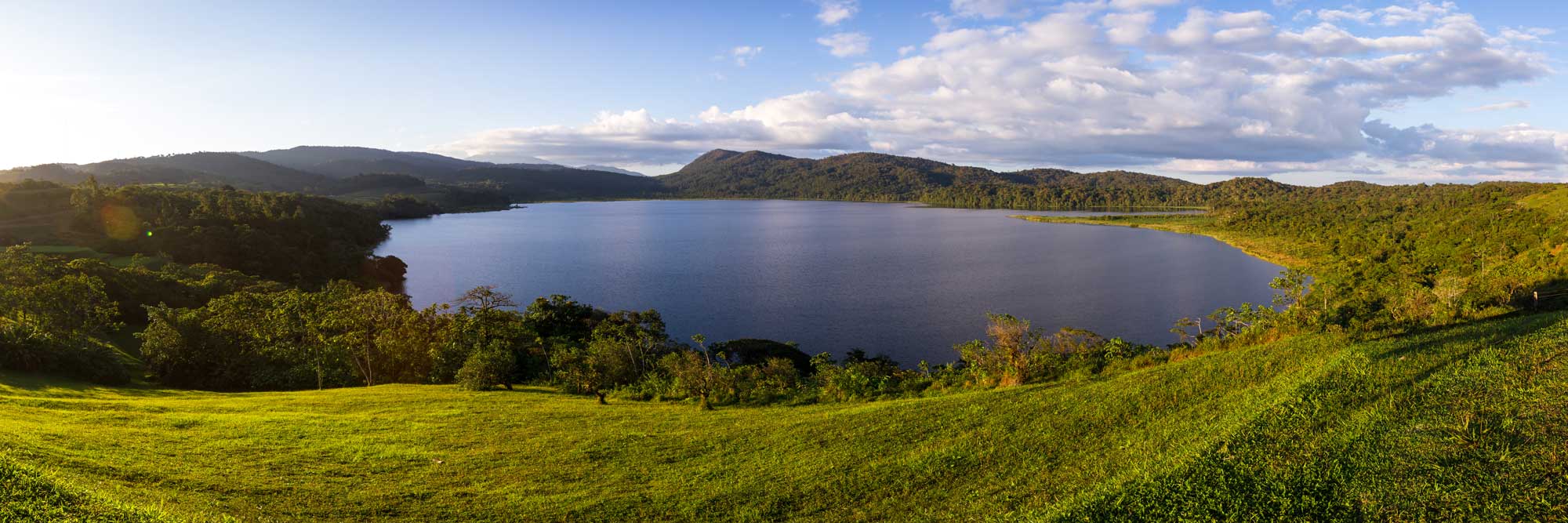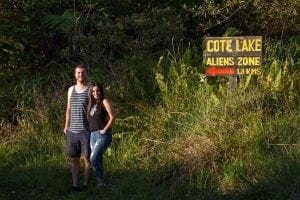
Cote Lake: History and Mystery at Heart
Centuries before modern cartographers put Cote Lake on the map for globally astonishing reasons, its local renown was legendary.
Historically important as a sacred place for tribal ceremonies and initiation rituals, the remote tropical sanctuary imparts a sense of magic and mystery that visitors find irresistible and unforgettable.
Natural attributes alone make the heart-shaped lake worthy of its name — Cote, or Coter, means peace and love in the Maleku language. In lush rainforest surroundings where native flora and fauna species thrive, Cote Lake is both a popular attraction for bird watching, hiking, horseback riding and water sports and a mystical, meditative retreat with special ecotourism appeal. On all counts, it’s an idyllic setting for the Ecolodge Lago de Coter to offer guests breathtaking views from the mountains above and a restorative escape from everyday demands and distractions.
Beyond its significance to Costa Rica’s indigenous Maleku culture, including current heritage preservation initiatives, Cote Lake is believed to have been a pilgrimage destination for shamans in the making from different Central or South American countries, including Brazil and Peru. With varied tribal and spiritual backgrounds, they would seek the blessings and wisdom needed to perform healing rituals involving medicinal plants.
Whatever mystical fascination Cote Lake has held through the ages was taken to a new level by 20th century photographic technology. Suspend disbelief if you will, but the validity of a 1971 aerial image that “accidentally” captured a flying saucer-like object on the lake has never been disproven. (See the sidebar for details.)
Cote Lake is located in northern Costa Rica’s Alajuela province, between Arenal Volcano and Tenorio Volcano. Access is via the road from La Fortuna to Tilarán bordering Lake Arenal. That road may be reached from Cañas on the Inter-American Highway or from La Fortuna, east of Lake Arenal.

Must be true, if not proven fake
This well-known aerial photo of Cote Lake has been widely cited by specialists in the field as one of the world’s most compelling confirmations that unidentified flying objects (UFOs) exist. (The Spanish acronym “OVNI” is for Objeto Volador No Identificado.)
On September 4, 1971, aerial photos of Cote Lake were being taken from 10,000 feet of altitude as a research undertaking for a proposed hydroelectric project. Photographers from the Costa Rican National Geographic Institute were using a special map-making camera programmed to snap a photo at 13-second intervals. When the film was developed, one frame showed what appeared to be a metallic disc about 160 feet in diameter. Because the disc was not visible in any previous or subsequent image frames, and light emissions were detected under close scrutiny, the analysts’ interpretation was that an OVNI was captured at the moment of entering or emerging from the lake.
After being kept secret for nearly a decade by the Costa Rican researchers involved, the Cote Lake photo was evaluated on different occasions by scientific authorities in the United States — including at NASA — and other countries. These international analyses consistently concluded that the photo had not been altered or manipulated, and that the metallic object on the lake is “real.”

